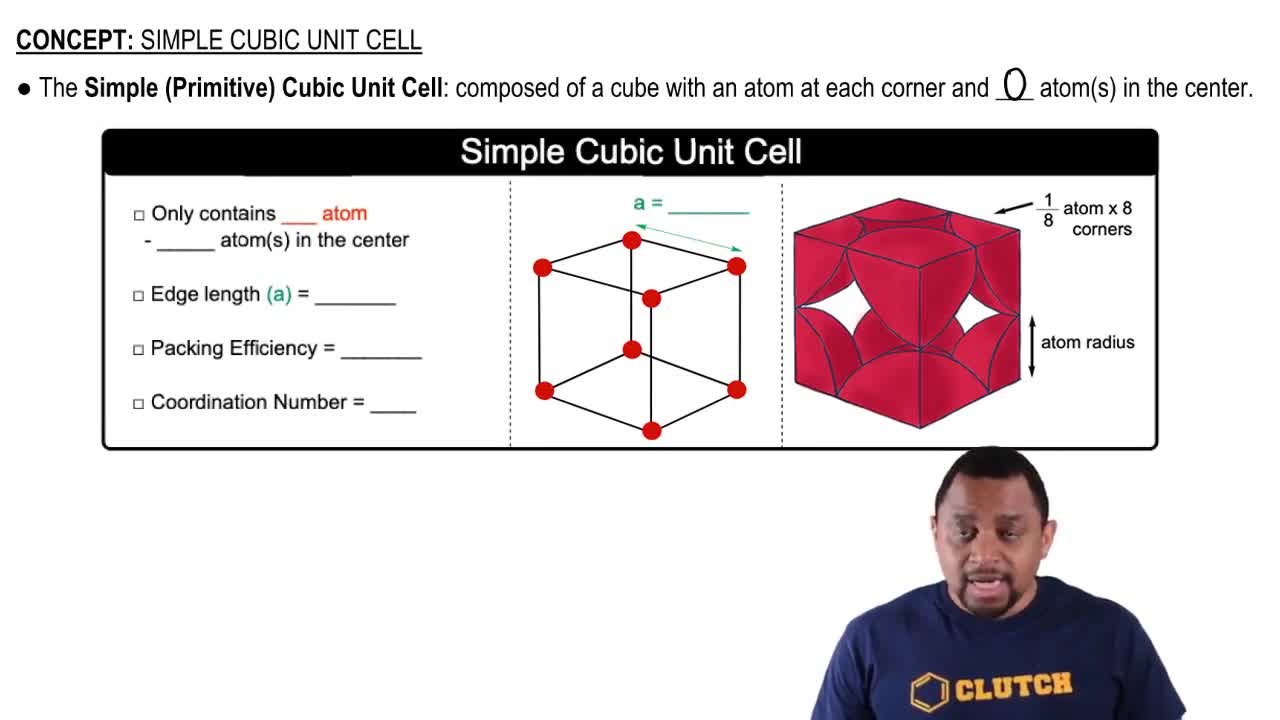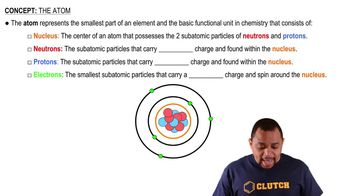The unit cell of a compound containing Co and O has a unit cell shown in the diagram. The Co atoms are on the corners, and the O atoms are completely within the unit cell. a. What is the empirical formula of this compound? b. What is the oxidation state of the metal?
Ch.12 - Solids and Modern Materials
Chapter 12, Problem 61b
A particular form of cinnabar (HgS) adopts the zinc blende structure. The length of the unit cell edge is 5.852 Å. (b) The mineral tiemannite (HgSe) also forms a solid phase with the zinc blende structure. The length of the unit cell edge in this mineral is 6.085 Å. What accounts for the larger unit cell length in tiemmanite?
 Verified step by step guidance
Verified step by step guidance1
Understand the zinc blende structure: It is a type of cubic crystal structure where each atom is tetrahedrally coordinated. In this structure, the unit cell is a cube, and the edge length is determined by the size of the atoms or ions involved.
Compare the atomic radii: The unit cell length is influenced by the size of the atoms. Compare the atomic radii of selenium (Se) and sulfur (S) since they are the differing atoms in HgSe and HgS, respectively.
Consider the atomic sizes: Selenium (Se) is larger than sulfur (S) because it is located below sulfur in the periodic table, which generally means it has a larger atomic radius due to additional electron shells.
Relate atomic size to unit cell length: The larger atomic radius of selenium compared to sulfur results in a larger unit cell edge length for HgSe compared to HgS, as the atoms occupy more space in the crystal lattice.
Conclude the reasoning: The larger unit cell length in tiemannite (HgSe) compared to cinnabar (HgS) is primarily due to the larger size of the selenium atoms compared to sulfur atoms, which increases the overall dimensions of the unit cell.

Verified video answer for a similar problem:
This video solution was recommended by our tutors as helpful for the problem above.
Video duration:
1mWas this helpful?
Key Concepts
Here are the essential concepts you must grasp in order to answer the question correctly.
Zinc Blende Structure
The zinc blende structure is a type of crystal lattice arrangement where each atom is tetrahedrally coordinated. In this structure, each zinc atom is surrounded by four sulfur atoms, and vice versa, forming a three-dimensional network. This arrangement is significant in understanding the properties of materials like cinnabar and tiemannite, as it influences their stability and interactions.
Recommended video:
Guided course

Resonance Structures
Unit Cell and Edge Length
A unit cell is the smallest repeating unit in a crystal lattice that reflects the symmetry and structure of the entire crystal. The edge length of a unit cell is a critical parameter that defines the size of the crystal structure. Variations in edge length can indicate differences in atomic size, bonding, or the presence of different elements within the crystal, which is essential for comparing cinnabar and tiemannite.
Recommended video:
Guided course

Simple Cubic Unit Cell
Atomic Size and Bonding
Atomic size refers to the radius of an atom, which can influence the distance between atoms in a crystal lattice. In the case of cinnabar (HgS) and tiemannite (HgSe), the larger unit cell length in tiemannite can be attributed to the larger atomic radius of selenium compared to sulfur. This difference in atomic size affects the overall dimensions of the unit cell and the stability of the crystal structure.
Recommended video:
Guided course

Atom Structure
Related Practice
Textbook Question
Textbook Question
A particular form of cinnabar (HgS) adopts the zinc blende structure. The length of the unit cell edge is 5.852 Å. (a) Calculate the density of HgS in this form. (c) Which of the two substances has the higher density? How do you account for the difference in densities?
Textbook Question
CuI, CsI, and NaI each adopt a different type of structure. The three different structures to consider are those shown in Figure 12.25 for CsCl, NaCl, and ZnS. a. Use ionic radii, Cs+(𝑟=1.81 Å), Na+(𝑟=1.16 Å), Cu+(𝑟=0.74 Å), and, I−(𝑟=2.06 Å), to predict which compound will crystallize with which structure.
